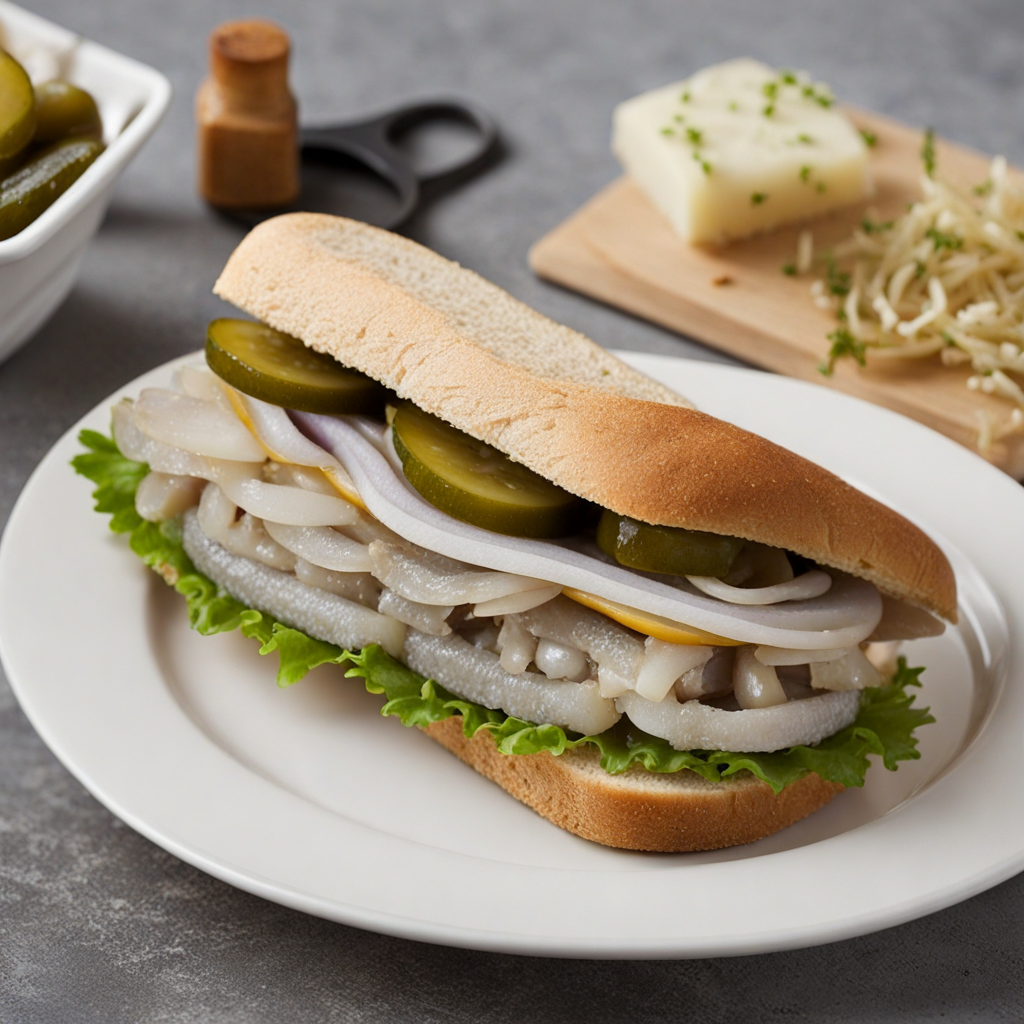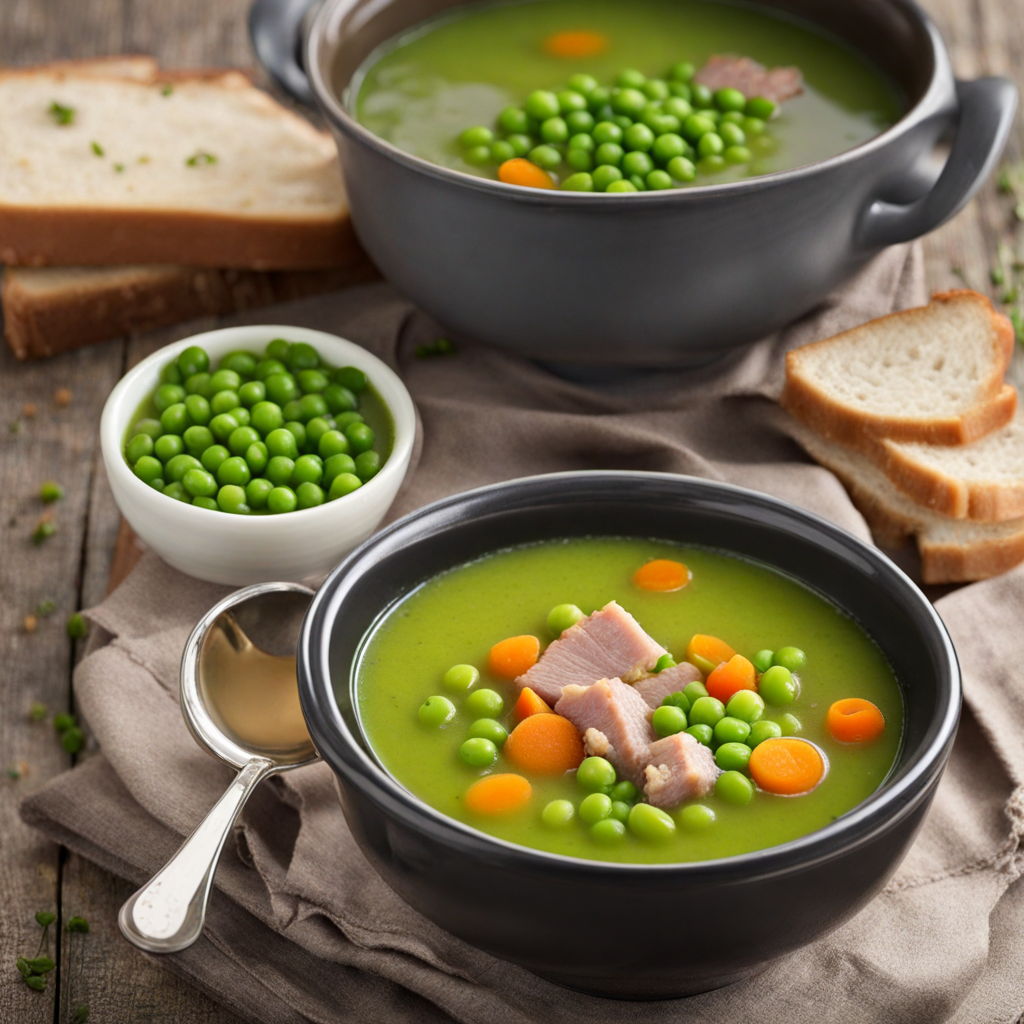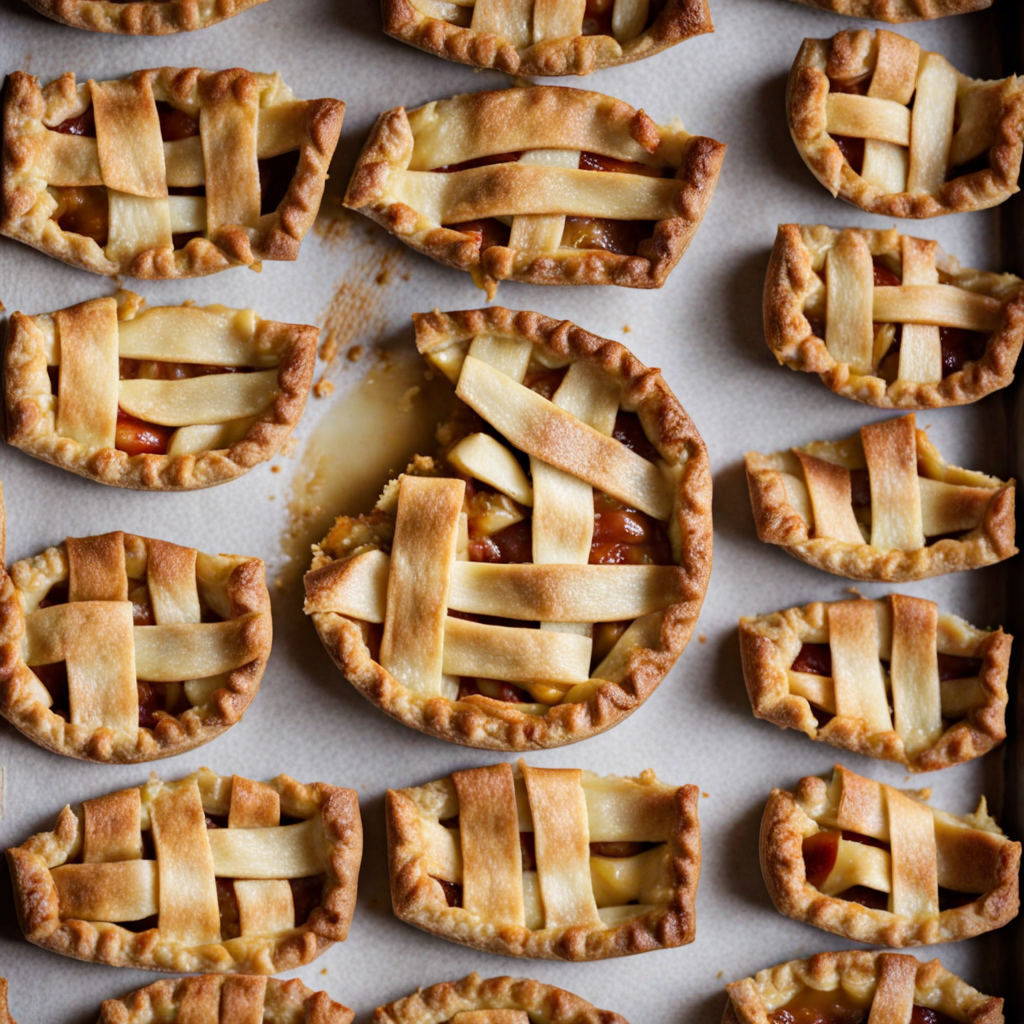Broodje Haring
Broodje Haring is a delightful Dutch street food that showcases the unique flavors of fresh herring, a fish that is particularly beloved in the Netherlands. This dish typically features raw herring fillets, which are known for their silken texture and briny flavor, served on a soft, crusty roll or bun. The herring is often garnished with finely chopped onions and sometimes pickles, adding layers of flavor and a satisfying crunch that complements the richness of the fish. The combination of these ingredients creates a harmonious balance that is both refreshing and savory, making it an iconic taste of Dutch cuisine. One of the most appealing aspects of Broodje Haring is the way it captures the essence of Dutch seafood culture. Herring holds a special place in the hearts of the Dutch, often celebrated during the herring season, which begins in May and lasts through the summer. The fish is typically cured in brine, enhancing its natural flavors while also ensuring its freshness. When you bite into a Broodje Haring, you are not just enjoying a sandwich; you are experiencing a piece of Dutch tradition that has been cherished for centuries. Eating Broodje Haring is not just about the taste; it’s about the experience. Many locals enjoy this dish standing at a fish stall, where you can watch the vendor skillfully prepare your sandwich. The casual atmosphere, combined with the vibrant flavors of the herring and accompanying toppings, makes it a must-try for anyone looking to explore the culinary landscape of the Netherlands. Whether you savor it as a quick snack or a light meal, Broodje Haring offers a taste of the sea that is both refreshing and unforgettable.
How It Became This Dish
The History of Broodje Haring: A Dutch Culinary Icon In the vibrant tapestry of Dutch cuisine, few dishes evoke as much nostalgia and cultural pride as the "broodje haring." This simple yet flavorful sandwich, typically made with raw herring, onions, and pickles, encapsulates the essence of Dutch maritime heritage and culinary tradition. To fully appreciate the significance of broodje haring, we must delve into its origins, cultural importance, and its evolution throughout the centuries. #### Origins of Herring in Dutch Cuisine The relationship between the Dutch and herring dates back to the Middle Ages. Herring, a small, silver fish found in the North Sea, became a staple in the diets of coastal communities in the Netherlands. The fish's abundance, coupled with its high oil content, made it an ideal source of nutrition, particularly in the harsh winters. The Dutch quickly learned that they could preserve herring through salting and fermentation, a method that allowed them to enjoy the fish year-round. By the 14th century, the herring fishery had evolved into a significant industry, with the Dutch leading the charge in fishing and trading this valuable resource. The herring was not only crucial for sustenance but also became a valuable commodity in international trade. The famous "Herring Trade" flourished in cities like Amsterdam and Haarlem, where fish markets buzzed with activity, and herring was sold in barrels to merchants from across Europe. #### The Development of Broodje Haring While the salted herring was enjoyed in various forms, the concept of broodje haring—a sandwich made with raw herring—began taking shape in the 19th century. The sandwich is believed to have emerged from the Dutch tradition of eating herring directly from the fish stalls, often accompanied by bread. As street food culture blossomed in urban centers, particularly during the industrial revolution, the broodje haring became a convenient meal for workers seeking a quick snack. The traditional preparation of broodje haring involves placing the raw fish in a soft white bun, typically garnished with finely chopped onions and gherkins. The combination of the briny herring, the sharpness of the onions, and the sweetness of the pickles creates a delightful balance of flavors. This simple yet delicious sandwich quickly gained popularity among all classes of society, reflecting a unique aspect of Dutch culinary culture: the ability to transform humble ingredients into something extraordinary. #### Cultural Significance Broodje haring is more than just a sandwich; it is a symbol of Dutch identity and pride. The consumption of herring is deeply embedded in the country's maritime history and agricultural practices. The herring season, which typically begins in May with the arrival of the new catch—known as "Nieuwe Haring"—is celebrated across the Netherlands. Festivities often include communal gatherings, where people come together to enjoy this delicacy. The first barrel of new herring is auctioned off each year, generating excitement and reflecting the importance of this fish in Dutch culture. Moreover, broodje haring is often associated with social customs and rituals. In cities like Amsterdam, it is common to see locals and tourists alike standing at street stalls, savoring their herring sandwich while engaging in conversation or enjoying the sights. The act of eating broodje haring often evokes memories of childhood or family gatherings, reinforcing its status as a beloved comfort food. The sandwich has also made its mark in popular culture. It is frequently featured in Dutch films, literature, and art, serving as a reminder of the country’s connection to the sea and its rich culinary heritage. Events like the annual Herring Festival in Scheveningen celebrate this culinary icon, showcasing various herring dishes and attracting thousands of visitors. #### Evolution and Modern Trends As the 20th century unfolded, the way people consumed broodje haring began to evolve. While the traditional herring sandwich remained popular, new variations emerged to cater to changing tastes and dietary preferences. The rise of fusion cuisine saw the incorporation of other ingredients, such as avocado, wasabi mayo, and even Asian-inspired sauces, creating a new wave of herring sandwiches that appealed to younger generations. Furthermore, the global movement toward sustainable eating has prompted a renewed interest in traditional fishing practices. As consumers become more conscious of the environmental impact of their food choices, there has been a resurgence in the appreciation for sustainably sourced herring. Many vendors now emphasize the importance of using fish caught in accordance with responsible fishing practices, ensuring the continued viability of herring stocks and the health of marine ecosystems. In contemporary Netherlands, broodje haring has also gained a presence beyond street stalls. Gourmet restaurants have begun to reimagine this classic dish, offering elevated versions that showcase the herring’s delicate flavor profile. Chefs experiment with artisan bread, unique toppings, and artisanal pickles, bringing a modern twist to this traditional favorite. #### Conclusion Broodje haring is not just a meal; it is a cultural artifact that tells the story of the Dutch people, their history, and their connection to the sea. From its humble origins as a street food staple to its status as a celebrated culinary icon, the herring sandwich embodies the spirit of Dutch ingenuity and resilience. As it continues to evolve and adapt to contemporary tastes, broodje haring remains a cherished part of the Netherlands’ culinary landscape, a delicious reminder of the country’s rich maritime heritage and the enduring love for this iconic dish. Whether enjoyed at a bustling market or a fine dining establishment, broodje haring offers a taste of Dutch culture and history, one bite at a time.
You may like
Discover local flavors from Netherlands







